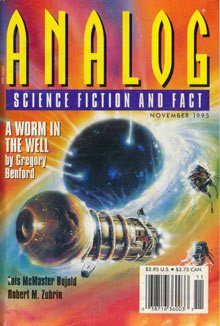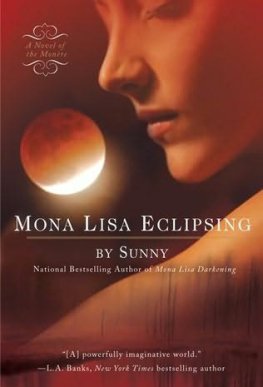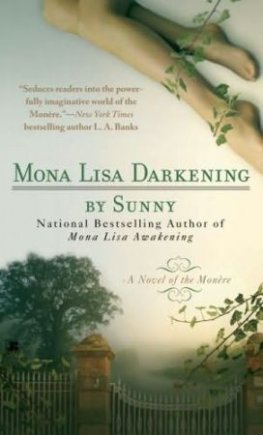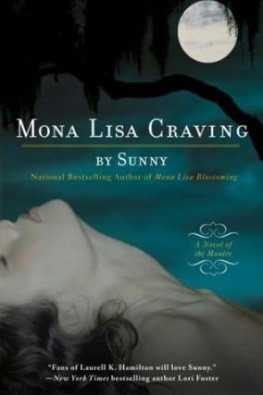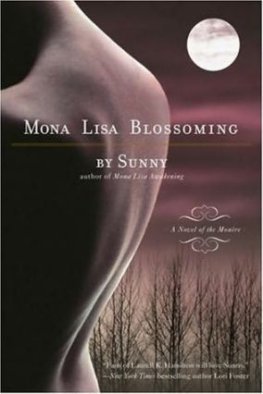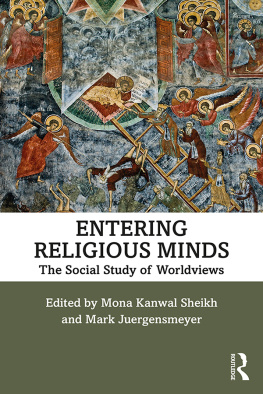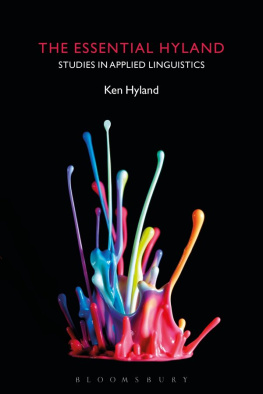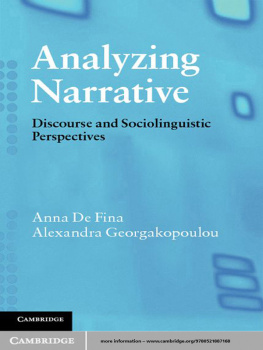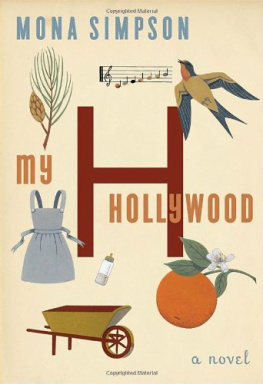Discourse and Narrative Methods
Discourse and Narrative Methods
- Mona Livholts
- Maria Tamboukou
SAGE Publications Ltd
1 Olivers Yard
55 City Road
London EC1Y 1SP
SAGE Publications Inc.
2455 Teller Road
Thousand Oaks, California 91320
SAGE Publications India Pvt Ltd
B 1/I 1 Mohan Cooperative Industrial Area
Mathura Road
New Delhi 110 044
SAGE Publications Asia-Pacific Pte Ltd
3 Church Street
#10-04 Samsung Hub
Singapore 049483
Maria Tamboukou and Mona Livholts 2015
Apart from any fair dealing for the purposes of research or private study, or criticism or review, as permitted under the Copyright, Designs and Patents Act, 1988, this publication may be reproduced, stored or transmitted in any form, or by any means, only with the prior permission in writing of the publishers, or in the case of reprographic reproduction, in accordance with the terms of licences issued by the Copyright Licensing Agency. Enquiries concerning reproduction outside those terms should be sent to the publishers.
Library of Congress Control Number: 2014951163
British Library Cataloguing in Publication data
A catalogue record for this book is available from the British Library
ISBN 978-1-4462-6969-5
ISBN 978-1-4462-6970-1 (pbk)
Editor: Katie Metzler
Editorial assistant: Lily Mehrbod
Production editor: Victoria Nicholas
Copyeditor: Salia Nessa
Proofreader: Rosemary Morlin
Marketing manager: Sally Ransom
Cover design: Shaun Mercier
Typeset by: C&M Digitals (P) Ltd, Chennai, India
Printed in Great Britain by Henry Ling Limited at The Dorset Press, Dorchester, DT1 1HD
List of Figures and Tables
Figures
Table
About the Authors
Mona Livholts(BA, MA, PhD) is Associate Professor of Social Work, Linkping University, Sweden and Coordinator of the Network for Reflexive Academic Writing Methodologies (RAW). The main focus of her work is emergent writing methodologies, gender and intersecting relations of power across the research themes: media studies, gender, space, memory and technological transformation and artistic research processes. Recent publications include:
Emergent Writing Methodologies in Feminist Studies and a trilogy of untimely academic novellas The professors chair, The snow angel and other imprints and Writing water.Maria Tamboukou(BA, MA, PhD) is Professor of Feminist Studies and Co-Director of the Centre for Narrative Research at the University of East London, UK. Her research activities develop the areas of critical feminisms, auto/biographical narratives and studies in neo-materialism. Writing feminist genealogies is the central focus of her work. She is the author of four monographs, three co-edited volumes on research methods, and more than 60 journal articles and book chapters. Recent publications include: the monograph
In the Fold between Power and Desire: Women Artists Narratives; and the co-edited collections
Doing Narrative Research and
Beyond Narrative Coherence.
Acknowledgements
This book emerges from a series of lectures, seminars and workshops that we have held over a decade in a number of countries, including Australia, Belgium, Norway, South Africa, Sweden and the UK, with graduate students, researchers interested in narrative and discourse analysis, as well as practitioners that have used narrative and discourse approaches in their work. We want to thank our students and the participants of these educational events for inspiring us to write this book, but also for giving us feedback about the way we have been organising and delivering our teaching.
I Introducing Discourse and Narrative Methods
ONE The Becoming of a Book: A Readers Guide
Mona Livholts
Maria Tamboukou
What is the difference between narrative and discourse analysis? This is one of the frequently asked questions when we teach our graduate students courses on narrative research methods, or hold workshops for researchers and practitioners on qualitative approaches in the social sciences. This book addresses this question by looking into two major, influential and growing theoretical and methodological interdisciplinary fields discourse and narrative methods and examining them in their interrelation. More specifically, the book aims to:
- be a guide to discourse and narrative methods
- map the theoretical influence from poststructuralist, postmodern, postcolonial and feminist ideas on the field of discourse and narrative
- offer deeper insights into discourse and narrative methods within three themes: media and society; gender and space; and autobiography and life writing
- present a variety of oral, textual, visual and other data for the purpose of analysing discourse and narrative
- be a helpful guide to situated writing based on concrete workshop exercises that promote ethical reflexivity, analytical thinking and creative engagement in the study of discourses and narratives.
Discourse and narrative analyses have emerged as two wide, heterogeneous fields of literature and practices that are different and partly overlapping. We offer below a very brief sketch of themes, questions and approaches, which will be further analysed and discussed in .
Discourse methods: a contested field
What is meant by discourse and how can we analyse discourses? Discourse is a term that has become increasingly popular during the past decades. Today, it is . In particular, feminist and postcolonial scholarship has provided important analyses and discussions on contested questions around the power of language to produce selfother, difference and inequality.
Doing discourse analysis requires what Marianne Winther Jrgensen and Louise Phillips (2002) describe as a whole package that integrates theory and method. Despite variations for such departure, a key premise is the sharing of a social constructionist philosophy and theory. Vivien Burr (2003: 25) has identified four premises for such departure, which are helpful for understanding the philosophies underpinning discursive approaches:
- a critical stance towards taken-for-granted knowledge
- historical and cultural specificity
- knowledge as sustained by social processes
- knowledge and social action going together.
The first premise challenges the idea that there is such a thing as objective observation and a reality already existing, and that what we see is the only possible version or knowledge. The second refers to how the way we produce concepts, categories and understandings of these are intimately intertwined with historical and cultural norms and views. As Burr argues, forms of knowledge can be regarded as artefacts of culture and we should not assume that








